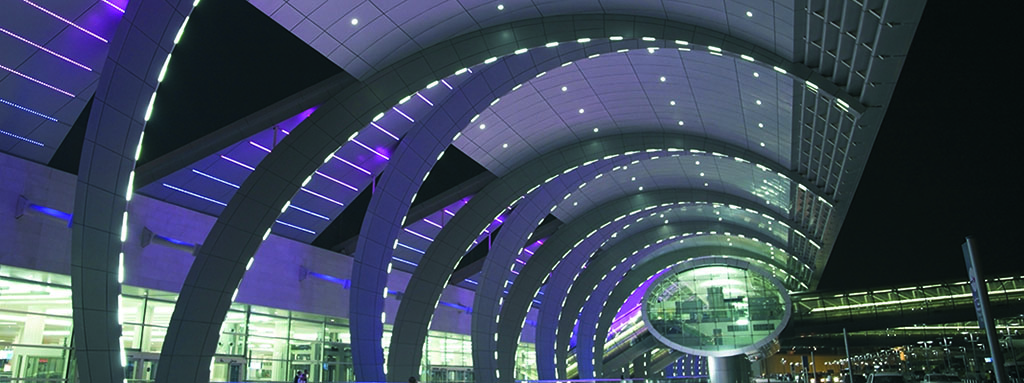Recently, a conference entitled “Aerospace Architecture and Engineering” was held in Seville (Spain), where the increasingly intense and collaborative relationship between two professions that might on the face of it seem unconnected (and some would say even antagonistic), namely engineering and architecture, was exhibited. Nothing could be further from the truth, however, in a working environment that is increasingly complex and in need of collaboration and meeting points. Both disciplines are “condemned” to interact and complement each other, not in a subordinate relationship, but in a relationship of interdependence and parallel work.
“Archiengineers” provide the perfect balance for designing and developing projects while keeping both machines and human beings in mind.
Without a doubt, the aerospace industry offers multiple fields of professional development for different disciplines, and one of these is reserved for the work of architects, who in this environment have an exciting opportunity to undertake and develop their professional creativity.
Architects and engineers have a symbiotic relationship in the ever-increasing common ground they share in the aerospace field, particularly in three key concepts: energy, materials and design.
The first two are development areas linked to efficiency and sustainability. Today, no good architectural project can be conceived without a proper study of its energy efficiency that, among other things, minimises electricity consumption through the implementation of passive energy-saving strategies: orientation, thermal insulation, natural lighting and use of renewable energy sources. Along with this, knowledge and use of materials and construction systems that contribute to the above result in significant improvements in terms of costs, durability and comfort.
How many millions of euros are involved in proper air conditioning, insulation, use of sunlight in a workplace, use of good-quality native materials and worker performance in a comfortable and well-structured environment? Taking these concepts to the aeronautical world, in terms of airport complexes, hangars or large manufacturing or production lines, assembly lines, etc., the impact on cost savings and improved productivity will undoubtedly make a difference and provide a boost in terms of quality and competitiveness between companies.
The third point in this collaborative symbiosis is design, which is always linked to production as the primary objective. Architects in the aerospace sector are faced with the challenge of resolving spaces in order to find solutions to the various problems being faced, such as the circulation and mobility of people and goods, the organisation of production and assembly lines, movement, the centralisation of services and the management of industrial needs.
This involves machines, but also a great many people. That is why the collaboration with specialised engineers has become so intense and fluid that a new word has been coined to define this new relationship between professionals: “archiengineers”, defined as all technicians, agents and designers capable of uniting knowledge and disciplines in order to undertake (in this case) any aerospace project. This could involve anything from the development and execution of small hangars or service buildings to a veritable city for the production of aircraft, or the largest airport complexes in the world.
During the conference, architects Bruce S. Fairbanks (Fairbanks Arquitectos), Alejandro Martín (AERTEC Solutions) and aeronautical engineer Fernando Castellón (Luis Vidal y Asociados) contributed their professional experience in the aerospace industry, once again confirming the need for collaboration between disciplines.
From their respective lectures, it could be deduced that an aeronautical building has to respond to important functional requirements, but at the same time unique interventions are required, with the capacity to distinguish each work. An example of this can be seen in the new airport control towers, which have become iconic elements while at the same time not neglecting the functional complexity they must meet and the service for which they are intended.
Airports themselves are continually subject to changes and new needs, which means that they are required to have a great capacity to adapt to the new functions and services that are demanded of them. Commercial use within these facilities already exceeds 50% of the profit of an airport and is a demand that must be met and integrated into these facilities, which makes it a new challenge for their design. Similarly, security and baggage handling are an underworld in terminals that, without the advice and participation of engineers and specialists, would be tremendously complex to resolve.
This continuous change and adaptation process has to be contrasted with the rigidity of certain buildings and their preconceived designs. These are problems that the architect must give an adequate response to for both the present and the future.
Technological progress is rapid and covers all areas of human activity, but it is especially important in the aerospace sector, where it is key to development. That is why the participation of different technologies is essential. It is this constant fusion between machine and man that gives rise to the middle ground between the purely engineering disciplines and architects who, in addition to being technicians, have a more humanistic vision, making people the centre and main object of their intervention. Architecture undoubtedly has a great deal to contribute to the aeronautical industry, which is expanding even beyond our own planet, with a whole universe left to be discovered in the future.



